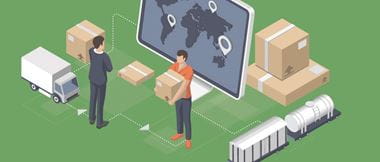
Reacting to retail barriers
What are the barriers to dynamic pricing in bricks and mortar stores?
Success in retail is about offering the right products, through the right channels, at the right price.
This has never been an easy task. But as competition has become fiercer, the ability to adjust prices, run promotions, introduce new products and recall less successful ones quickly in response to day-to-day changes in the market has become essential.
At the same time, consumers have more tools than ever at their fingertips for finding the exact product they want – and how to get it at the lowest possible price – so those retailers that are agile enough to keep pace can have a significant advantage and minimise retail barriers.
Simplifying processes
In a world where retailers like Amazon are able to adjust the prices of thousands of products several times per day in response to market conditions, this function has never been more important.
This is as much the case for retailers with brick-and-mortar stores as it is for purely digital businesses – except that they need to contend with more moving parts.
This being the case, the more processes that can be simplified and not handled manually by an employee, the better.
For example, whereas for a purely online retailer, making a price adjustment might be as simple as typing a new number into a field in the content management system, for physical stores the new price needs to be printed out in the correct format and placed in any locations where that product is on offer.
While some retailers are bypassing this issue with electronic shelf labels, which use LCD displays rather than paper printouts for pricing, this has yet to be widely adopted and, for the majority of UK retailers, printed pricing is set to be the reality for years to come.
With this in mind, re-pricing hundreds of products across a large store can be labour intensive, so a well-designed and user-friendly printing system can save significant amounts of time.
This is one of the central benefits of Managed Print Services (MPS) agreements. A good MPS provider will be able to work with you to understand the needs of your business and implement a customised solution that allows new prices to be cascaded from your pricing system onto the shop floor as quickly and reliably as possible.
Customised printer interfaces allow seamless integration with software platforms to allow prices to be printed without the need for employees to manually input any data, saving time and minimising the risk of errors being made.
As retailers begin to migrate away from printed signage, we are beginning to see hybrid print and digital dynamic pricing measures that make use of smartphone technology to show customers real-time prices if these are lower than those printed on shelves. This can be achieved by including QR codes on labels for customers to scan for the latest price.
Again, making this kind of system work efficiently calls for integration between your software platform and printer solution.
The Big Picture
Ultimately, it’s about minimising the delay in the process of receiving intelligence, making a decision based on it and reflecting that decision in the prices consumers see. The time it takes retailers to do this continues to fall – to a point where it can take only a matter of minutes in the case of some online retailers.
Even if the practicalities of your operation mean working at this speed is unachievable, it’s clear that being more dynamic with pricing can help steal a march on competitors, so implementing an IT system to allow this can pay major dividends.
For more retail solutions information visit our retail area.





